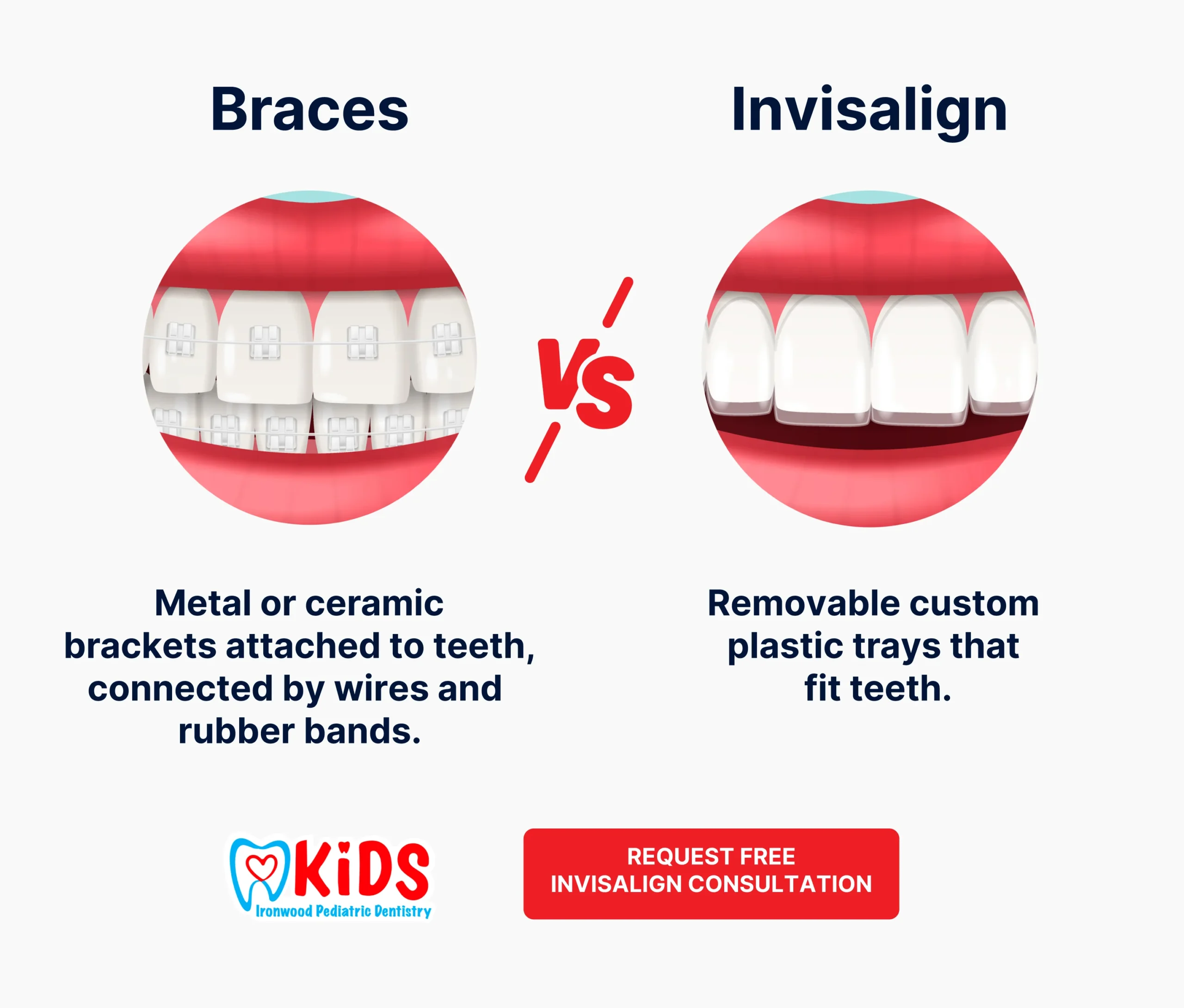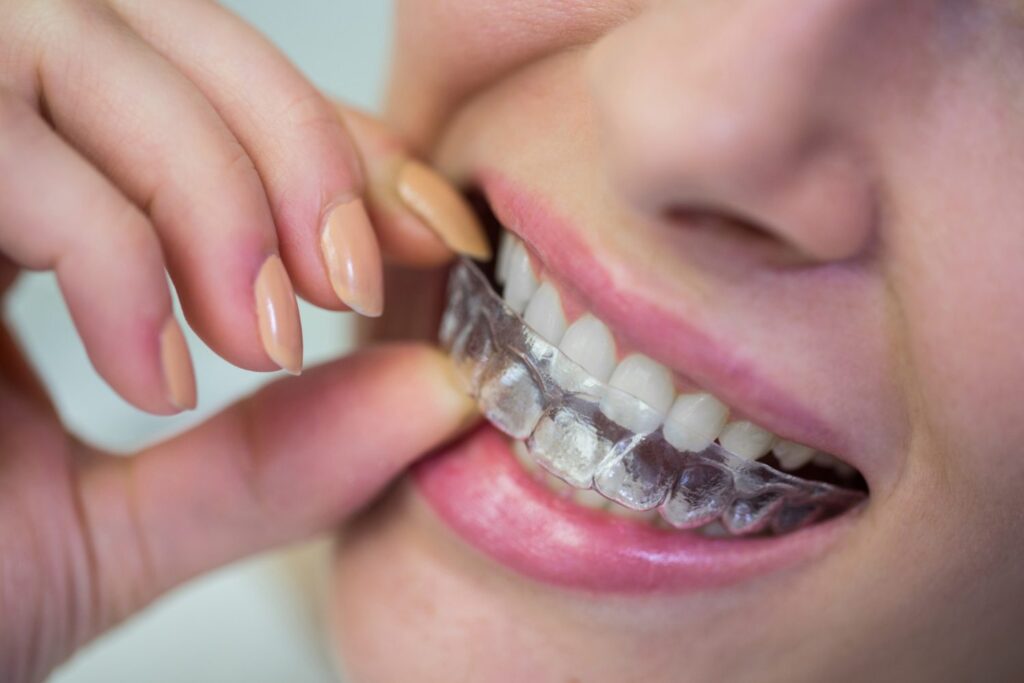Frequently Asked Questions Regarding Invisalign: Everything You Need to Know
Frequently Asked Questions Regarding Invisalign: Everything You Need to Know
Blog Article
Invisalign vs. Standard Dental braces: Which Option Is Right for You?
When thinking about orthodontic therapy, the choice between Invisalign and conventional braces presents numerous vital aspects that merit careful evaluation. Invisalign offers a very discreet option with removable aligners, while traditional dental braces supply a more noticeable yet reliable option for severe imbalance.
Introduction of Treatment Alternatives

On the other hand, standard braces include steel brackets and cables that are adhered to the teeth. This method uses continual pressure gradually to achieve positioning. While effective for complicated orthodontic concerns, conventional dental braces call for regular brows through for modifications and can posture difficulties in keeping oral health due to the difficulty of cleaning about cables and brackets.
Both choices have their merits, and the choice typically depends upon details oral problems, way of living choices, and person compliance. Ultimately, seeking advice from an orthodontic specialist is crucial for identifying the most appropriate treatment plan tailored to private requirements. Comprehending the nuances of each choice can substantially affect the general success of orthodontic therapy.
Aesthetic Considerations
A considerable element influencing the choice between Invisalign and typical dental braces is the visual charm each treatment provides. Invisalign aligners are crafted from clear plastic, making them practically unnoticeable when worn. This very discreet look is specifically interesting teens and adults who might really feel uneasy about their orthodontic treatment. The capacity to keep a natural smile throughout the alignment process can dramatically boost the patient's confidence in social and professional setups.
In comparison, traditional dental braces consist of steel brackets and cords, which can be a lot more noticeable. While innovations in orthodontic innovation have actually brought about the advancement of smaller sized brackets and tinted elastics, standard braces still preserve a more obvious profile. For some individuals, the presence of dental braces may hinder them from seeking essential treatment.
Inevitably, the choice in between Invisalign and conventional dental braces may pivot on personal choices relating to visual appeals. Individuals who focus on discretion usually lean toward Invisalign, while those who are less worried regarding exposure may select standard braces. Recognizing the visual implications of each alternative is critical for making an informed decision that aligns with one's way of life and choices.
Comfort and Convenience

In terms of ease, Invisalign aligners are detachable, making it possible for individuals to appreciate their preferred foods without restriction and maintain optimum dental health. Brushing and flossing are simplified, as the aligners can be gotten during these regimens, whereas typical dental braces call for mindful steering around wires and brackets.
In comparison, traditional dental braces demand routine changes, making them less practical for those with active routines. On the whole, the comfort and comfort of Invisalign make it an appealing selection for many people seeking orthodontic treatment.
Therapy Duration and Performance
While both Invisalign and standard braces work in correcting oral misalignments, the duration of therapy can vary substantially between both choices. Usually, Invisalign therapy can take anywhere from 12 to 18 months, relying on the complexity of the situation. The clear aligners work by progressively shifting teeth right into i loved this their wanted positions, and routine follow-ups with an orthodontist aid ensure development stays on track.
On the other hand, standard dental braces usually require a longer commitment, generally ranging from 18 months to three years. This is because of their fixed nature and using brackets and cables, which can be more reliable for intricate instances and extreme imbalances (Invisalign). The therapy efficiency of standard dental braces is well-documented, as they enable exact modifications and greater control over tooth movement
Ultimately, the selection in between Invisalign and standard dental braces may depend upon both the anticipated therapy period and the details oral problems at hand. Consulting with an orthodontist is essential, as they can provide customized referrals based upon private needs, guaranteeing the chosen approach straightens with preferred outcomes and timeframes.
Price Contrast and Insurance Policy Choices
Cost plays a substantial function in the decision-making process for people thinking about orthodontic treatment, whether choosing Invisalign or standard braces. Typically, the price of Invisalign ranges from $3,000 to $8,000, while conventional braces generally cost between $2,000 and $6,000. Elements affecting these expenses consist of the complexity of the case, the period of therapy, and geographical place.
Many dental insurance coverage More Help strategies offer partial insurance coverage for orthodontic therapies, but the specifics can vary commonly. Usually, traditional braces may be a lot more regularly covered by insurance plans compared to Invisalign, which some insurance companies classify as an aesthetic procedure.
Additionally, several orthodontic methods use adaptable layaway plan, making both treatment options much more easily accessible. People need to inquire about potential financing options and discounts for upfront payments. Assessing the overall cost, including insurance benefits and payment plans, is important for making an informed decision that aligns with both aesthetic choices and spending plan factors to consider.

Conclusion
In summary, the choice between Invisalign and conventional braces rests on multiple factors, including visual choices, convenience, therapy period, and expense. Invisalign supplies a very discreet, removable choice that helps with oral hygiene and dietary versatility, while conventional braces may be preferable for complex oral problems and often come at a reduced rate factor. Eventually, assessment with an orthodontist is important to assess specific conditions and figure out the most proper treatment alternative for achieving optimum dental positioning.
When considering orthodontic therapy, the choice in between Invisalign and standard braces offers a number of vital elements that warrant careful analysis.Comparing Invisalign and traditional braces reveals unique treatment alternatives for orthodontic adjustment.While both Invisalign and traditional braces are reliable in fixing oral misalignments, the period of treatment can vary significantly in between the this page two choices.Price plays a significant duty in the decision-making process for individuals taking into consideration orthodontic treatment, whether choosing for Invisalign or typical dental braces.In summary, the option in between Invisalign and conventional dental braces pivots on multiple elements, consisting of visual preferences, comfort, therapy period, and cost.
Report this page